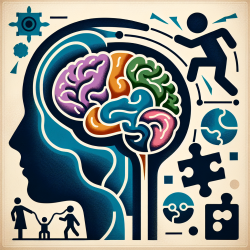Introduction
In the realm of developmental disorders, the cerebellum plays a crucial yet often overlooked role. Recent research, such as the study titled "Cerebellar Involvement in Clumsiness and Other Developmental Disorders" by Richard B. Ivry, sheds light on the multifaceted contributions of the cerebellum beyond motor control. This blog aims to help practitioners enhance their skills by implementing insights from this research or encouraging further exploration into the topic.
The Role of the Cerebellum
The cerebellum, traditionally associated with motor control, has been implicated in various developmental disorders. High-resolution MRI scans and behavioral studies have expanded our understanding of its functional contributions. The cerebellum's involvement in coordination and precise timing is particularly relevant to clumsiness, a common issue in developmental disorders.
Clumsiness and Cerebellar Dysfunction
Clumsiness, characterized by coordination problems, has been linked to cerebellar dysfunction. Interestingly, while clumsiness is a coordination issue, the cerebellum's role in this developmental problem has not been extensively studied. Select studies indicate that some clumsy children exhibit difficulties in tasks requiring precise timing, akin to adult patients with cerebellar lesions.
Implications for Practitioners
Practitioners working with children who exhibit clumsiness or other developmental disorders can benefit from understanding the cerebellum's role. Here are some practical steps they can take:
- Incorporate cerebellar-focused assessments in evaluations to identify potential dysfunctions.
- Utilize therapeutic interventions that target coordination and timing skills.
- Collaborate with neurologists or specialists for comprehensive care plans.
- Stay informed about the latest research on cerebellar involvement in developmental disorders.
Encouraging Further Research
While current studies provide valuable insights, the heterogeneity of neural bases in clumsiness suggests a need for further research. Practitioners are encouraged to contribute to this field by conducting studies or collaborating with researchers to explore the cerebellum's role in developmental disorders.
Conclusion
The cerebellum's involvement in developmental disorders, particularly clumsiness, offers a promising avenue for enhancing therapeutic practices. By integrating research findings into clinical practice, practitioners can improve outcomes for children with developmental challenges.
To read the original research paper, please follow this link: Cerebellar Involvement in Clumsiness and Other Developmental Disorders.










